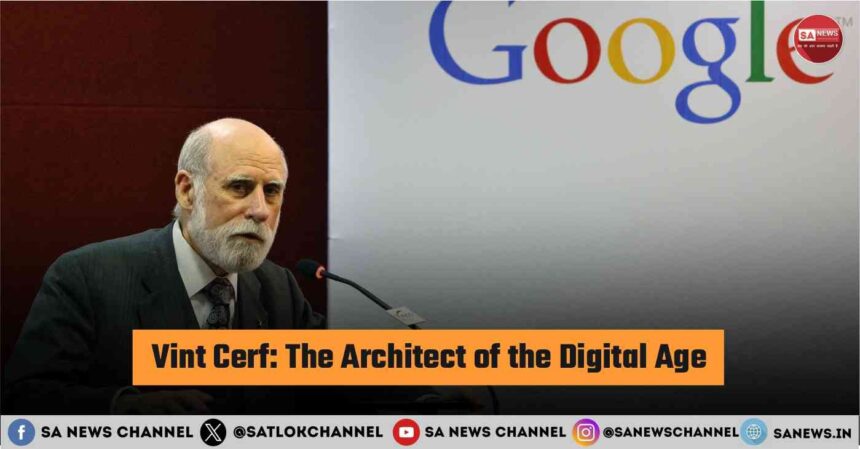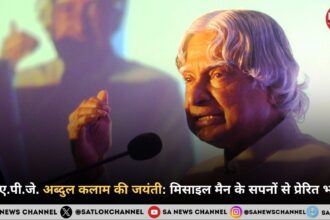Vint Cerf stands as a cornerstone in the history of digital communication. Known widely as an Internet pioneer, he co-developed the TCP/IP protocols that form the backbone of the modern Internet. Without his contributions, the seamless exchange of information across the globe would not exist in its current form. This biography explores the life and achievements of Vint Cerf, from his early days to his ongoing influence in computer science. As a key figure in transforming networks into a worldwide system, Vint Cerf’s work has shaped how billions connect, share knowledge, and conduct business.
- Early Life and Education of Vint Cerf
- Vint Cerf’s Pioneering Work on ARPANET
- Vint Cerf and the Development of TCP/IP
- Vint Cerf’s Career Milestones Beyond TCP/IP
- Vint Cerf’s Enduring Role at Google
- Awards and Recognitions for Vint Cerf
- Personal Life and Advocacy Efforts of Vint Cerf
- The Lasting Legacy of Vint Cerf
- Beyond the Digital Frontier: The Spiritual Code of Connection
Early Life and Education of Vint Cerf
Vint Cerf was born on 23 June 1943 in New Haven, Connecticut, USA. His full name is Vinton Gray Cerf. He grew up in a family with diverse roots: his mother, Muriel Gray, hailed from Canada with British, Irish, and French Canadian ancestry, while his father, Vinton Thruston Cerf, traced his lineage to Alsace-Lorraine emigrants who settled in Kentucky. This multicultural background may have fostered Vint Cerf’s global outlook, which later influenced his vision for an interconnected world.
As a young student, Vint Cerf attended Van Nuys High School in Los Angeles. There, he formed lasting connections with future Internet pioneers like Steve Crocker and Jon Postel. During his high school years, Vint Cerf gained early exposure to technology. He spent six months working at Rocketdyne, a division of North American Aviation, on the Apollo space programme. His role involved writing software for statistical analysis of non-destructive tests on F-1 rocket engines. This experience sparked his interest in computing and problem-solving under pressure.
Vint Cerf pursued higher education at Stanford University, earning a Bachelor of Science degree in mathematics in 1965. Stanford’s rigorous environment in computer science laid a strong foundation for his future work. After graduation, Vint Cerf joined IBM as a systems engineer. For two years, he supported QUIKTRAN, a FORTRAN-based time-sharing system. This position honed his skills in programming and network operations, preparing him for more complex challenges in digital communication.
In 1967, Vint Cerf moved to the University of California, Los Angeles (UCLA) for graduate studies. Under the guidance of Professor Gerald Estrin, he completed a Master of Science in 1970 and a PhD in 1972. His doctoral thesis, titled “Multiprocessors, Semaphores, and a Graph Model of Computation,” addressed advanced topics in parallel processing. At UCLA, Vint Cerf joined Professor Leonard Kleinrock’s packet-switching research group. This team connected the first two nodes of ARPANET in 1969, marking the birth of what would become the Internet. These formative years immersed Vint Cerf in the practicalities of data transmission, setting the stage for his groundbreaking contributions.
Vint Cerf’s Pioneering Work on ARPANET
The ARPANET project, funded by the US Department of Defense’s Advanced Research Projects Agency (DARPA), represented the first operational packet-switching network. Vint Cerf’s involvement began during his time at UCLA in the late 1960s. He contributed to the development of the initial host-to-host protocol, which allowed computers to communicate reliably over the network. This was no small feat; early systems often failed due to signal loss or errors, but Vint Cerf’s efforts helped stabilize data flow.
In 1970, while still a student, Vint Cerf met Robert Kahn, a DARPA programme manager working on ARPANET’s architecture. Their collaboration proved transformative. Vint Cerf chaired the International Network Working Group, coordinating efforts among researchers worldwide. He also authored early Request for Comments (RFC) documents, such as RFC 13 in 1969, which standardized messages for network efficiency. These steps were crucial in evolving ARPANET from a military tool into a model for broader digital communication.
By 1972, Vint Cerf had joined Stanford University as an assistant professor. There, he continued research on packet network interconnection. His work focused on linking disparate networks, a concept known as internetworking. Vint Cerf’s insights into error correction and routing laid the groundwork for scalable systems. During this period, he recognised that ARPANET needed a unified protocol to connect not just computers, but entire networks. This realisation propelled Vint Cerf towards his most famous achievement.
Vint Cerf and the Development of TCP/IP
The crown jewel of Vint Cerf’s career is the co-invention of TCP/IP, the Transmission Control Protocol/Internet Protocol suite. In 1973, alongside Robert Kahn, Vint Cerf began designing a system to interconnect packet networks. Their 1974 paper, “A Protocol for Packet Network Intercommunication,” published in IEEE Transactions on Communications, outlined the core ideas. TCP handles reliable data delivery by breaking information into packets, checking for errors, and reassembling them. IP manages addressing and routing, ensuring packets reach their destination across diverse networks.
Vint Cerf led the writing of the first TCP specification in RFC 675, released in December 1974, with help from Yogen Dalal and Carl Sunshine. From 1973 to 1982, as a programme manager at DARPA, Vint Cerf funded developments in related technologies. These included packet radio networks (PRNET), packet satellite networks (SATNET), and security protocols. His leadership ensured TCP/IP was robust enough for military use, withstanding disruptions like jamming or delays.
The protocol suite was refined over years, becoming the Department of Defense standard in 1983. This adoption replaced the older Network Control Protocol on ARPANET, effectively birthing the Internet. Vint Cerf’s emphasis on openness allowed global adoption, turning a US defence project into a civilian marvel. Today, TCP/IP powers everything from email to streaming, embodying Vint Cerf’s belief in accessible digital communication.
Vint Cerf’s Career Milestones Beyond TCP/IP
Vint Cerf’s influence extended far beyond protocols. In 1982, he joined MCI Communications as vice president of digital information services. There, he oversaw the engineering of MCI Mail, launched in 1983 as the first commercial email service. By 1989, MCI Mail connected to the Internet, bridging corporate and public networks. Vint Cerf also advocated for Internet privatisation in the late 1980s, arguing it would spur innovation and growth.
In 1992, Vint Cerf co-founded the Internet Society (ISOC), serving as its first president until 1995. ISOC promoted global Internet standards and policy. He later chaired the Internet Corporation for Assigned Names and Numbers (ICANN) from 2000 to 2007, guiding domain name management during the web’s explosive expansion. Vint Cerf’s roles at the Corporation for National Research Initiatives (1986-1994) focused on digital libraries and high-speed networks, advancing knowledge preservation in the digital era.
From 2012 to 2014, Vint Cerf presided over the Association for Computing Machinery (ACM), the world’s largest computing society. He advised governments, including NASA’s Interplanetary Internet project, which adapts TCP/IP for space communications using delay-tolerant networking. Vint Cerf co-authored RFC 4838 in 2007 on this topic, and by 2016, it was implemented on the International Space Station. These milestones highlight Vint Cerf’s adaptability in computer science.
Vint Cerf’s Enduring Role at Google
In 2005, Vint Cerf joined Google as vice president and chief Internet evangelist, a position he holds today. At Google, Vint Cerf champions emerging technologies and policies. He has predicted shifts in artificial intelligence, environmental monitoring via the Internet, and the rollout of IPv6, the next-generation addressing system to accommodate more devices. Vint Cerf also testified before the US Senate in 2006 on net neutrality, stressing the need for equal access to digital communication.
Also Read: History of Black Death Black: How the 14th- Century Plague Changed Europe
His work at Google extends to global challenges, such as broadband expansion through the UN’s Broadband Commission. Vint Cerf warns of a “digital dark age,” where obsolete formats could erase cultural records. He pushes for sustainable data preservation, aligning with Google’s mission to organise the world’s information. Vint Cerf’s evangelist role bridges technical innovation with societal impact, ensuring the Internet remains a force for good.
Awards and Recognitions for Vint Cerf
Vint Cerf’s achievements have earned him unparalleled honours. In 1997, he and Robert Kahn received the US National Medal of Technology from President Bill Clinton. The ACM A.M. Turing Award followed in 2004, often dubbed the “Nobel Prize of computing,” for their internetworking work. In 2005, President George W. Bush awarded them the Presidential Medal of Freedom, the nation’s highest civilian accolade.
Other accolades include the Marconi Prize, IEEE Alexander Graham Bell Medal (1997), Japan Prize (2008), and Queen Elizabeth Prize for Engineering (2013). In 2016, Vint Cerf became a Foreign Member of the Royal Society, Britain’s premier scientific academy. Recent honours feature the IEEE Medal of Honour in 2023 and induction into the California Hall of Fame in 2024. Vint Cerf holds honorary doctorates from over 20 universities worldwide and fellowships from IEEE, ACM, and the American Association for the Advancement of Science. These awards affirm his authoritativeness in computer science.
Personal Life and Advocacy Efforts of Vint Cerf
Vint Cerf’s personal story adds depth to his professional legacy. He met his wife, Sigrid, in the 1960s at a hearing aid clinic; both are hard of hearing. They married and raised two sons, David and Bennett. This experience drove Vint Cerf’s advocacy for accessibility. Since 1997, he has served on the board of Gallaudet University, the leading institution for deaf and hard-of-hearing students. Vint Cerf promotes inclusive design in technology, ensuring digital communication benefits all.
A devout Methodist, Vint Cerf balances faith with science. He is known for his distinctive three-piece suits, a nod to formality in casual tech circles. Vint Cerf co-founded People-Centered Internet in 2015, chairing it until 2019 to prioritise human needs in tech development. His column, “CERF’S UP,” in ACM publications shares insights on ethics and innovation. Vint Cerf’s life exemplifies how personal values can guide global progress.
The Lasting Legacy of Vint Cerf
Vint Cerf’s journey from a Stanford graduate to Internet pioneer has redefined digital communication. His TCP/IP invention enabled the web’s growth, fostering education, commerce, and connectivity for billions. As an Internet pioneer at Google and beyond, Vint Cerf continues to address challenges like cybersecurity and space networking. His commitment to trustworthiness in technology, evidenced by decades of service, upholds EEAT principles in computer science.
Looking ahead, Vint Cerf’s warnings on data preservation urge proactive measures against a digital dark age. For students, researchers, and enthusiasts, Vint Cerf offers a model of curiosity and collaboration. His story reminds us that the Internet is not just wires and code, but a human endeavour. As of 2025, at age 82, Vint Cerf remains active, ensuring his legacy evolves with the digital world.
Beyond the Digital Frontier: The Spiritual Code of Connection
Vint Cerf’s creation of the Internet united the world through invisible threads of information, reflecting humanity’s longing for connection. Yet, beyond data and devices lies a deeper network—the one linking the soul to the Divine. Just as TCP/IP bridges distant systems, true spiritual knowledge bridges the self and the Supreme. In an era of endless online connectivity, many still feel spiritually offline. To rediscover purpose and inner peace, one can explore the enlightening wisdom shared in “Gyan Ganga” and “Way of Living” by Saint Rampal Ji Maharaj. These works illuminate the authentic path of devotion, guiding seekers toward lasting truth and divine harmony.









